Gemstones with special optical effects are very “plus” for those who will appreciate them 。
Many new people who just like jewelry do not understand the special optical effects of these stones, and it is easy to be fooled when choosing.
Now I will tell you about the special optical effects of gems ❓
✅ The cat’s eye effect
Cat’s eye effect refers to the optical phenomenon that after some gem minerals are processed into a curved surface, a bright light band can be displayed on its curved surface, and when the gem is rotated against the light band, the light band also moves parallel.
🔔The cat’s eye effect must have three conditions:
(1) Gemstone minerals contain abundant tubular and fibrous inclusions arranged in parallel.
(2) The bottom side is parallel to the inclusions when cutting the gem mineral.
(3) The gem mineral is polished into a curved shape.
There are many gem minerals that can have the cat’s eye effect, such as chrysoberyl, quartz (including tiger’s eye), tourmaline, beryl, tourmaline, apatite, calydalite, diopside, enstatite, andalusite, sillimanite, etc.
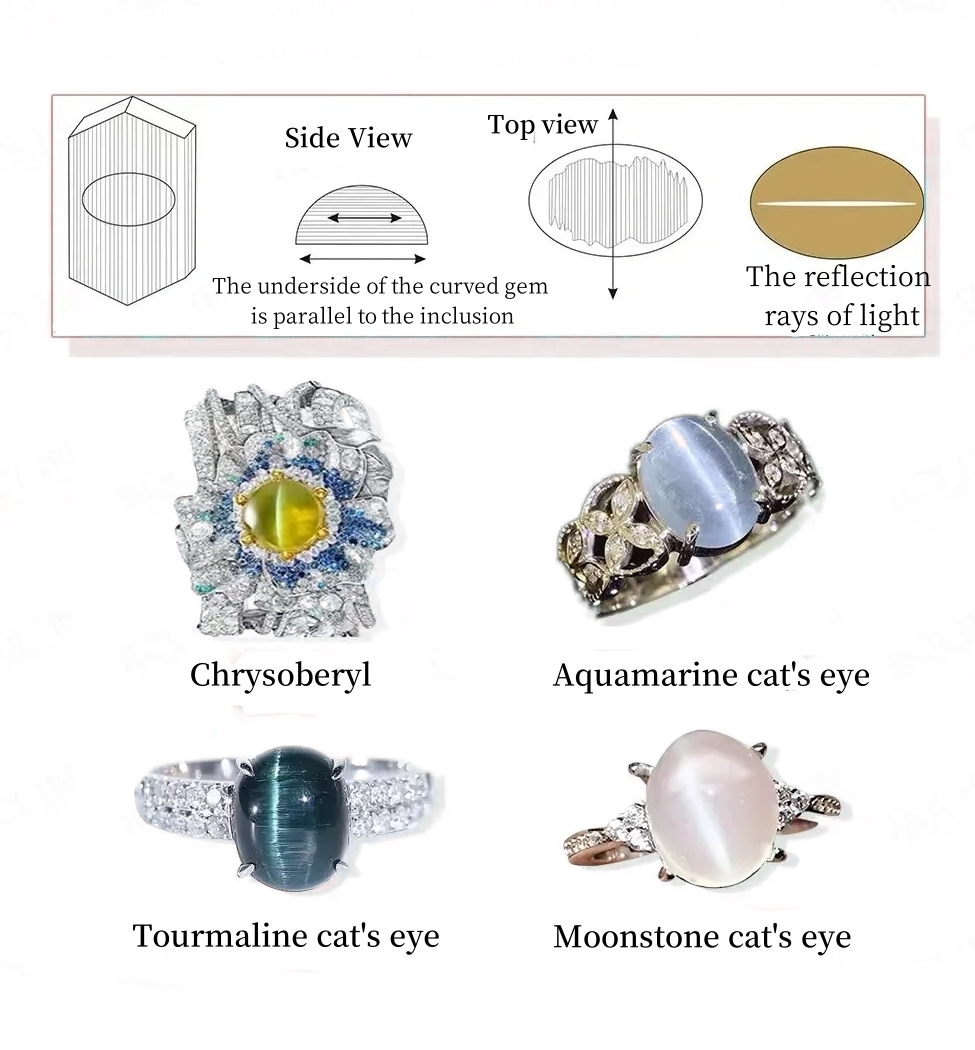
✅ Starlight effect
Some gem minerals, when processed into a curved surface, can show a number of intersecting light bands on its curved surface, forming a radial starlight pattern of four rays, six rays or twelve rays.
🔔Starlight is produced under the following conditions:
(1) The gemstone has two or more sets of inclusions arranged in a directional manner.
(2) Shape the stone so that its underside is parallel to the plane of the inclusion.
(3) The gem mineral is polished into a curved shape.
The gemstone minerals that can show the starlight effect are: Starlight ruby and starlight sapphire (six rays, twelve rays), starlight hibiscus (six rays), starlight beryl (six rays), starlight iron aluminite (four rays), starlight spinel (four rays), starlight diopside (four rays), starlight enstatite (four rays), starlight tremolite (four rays), starlight corydalite (four rays), etc.
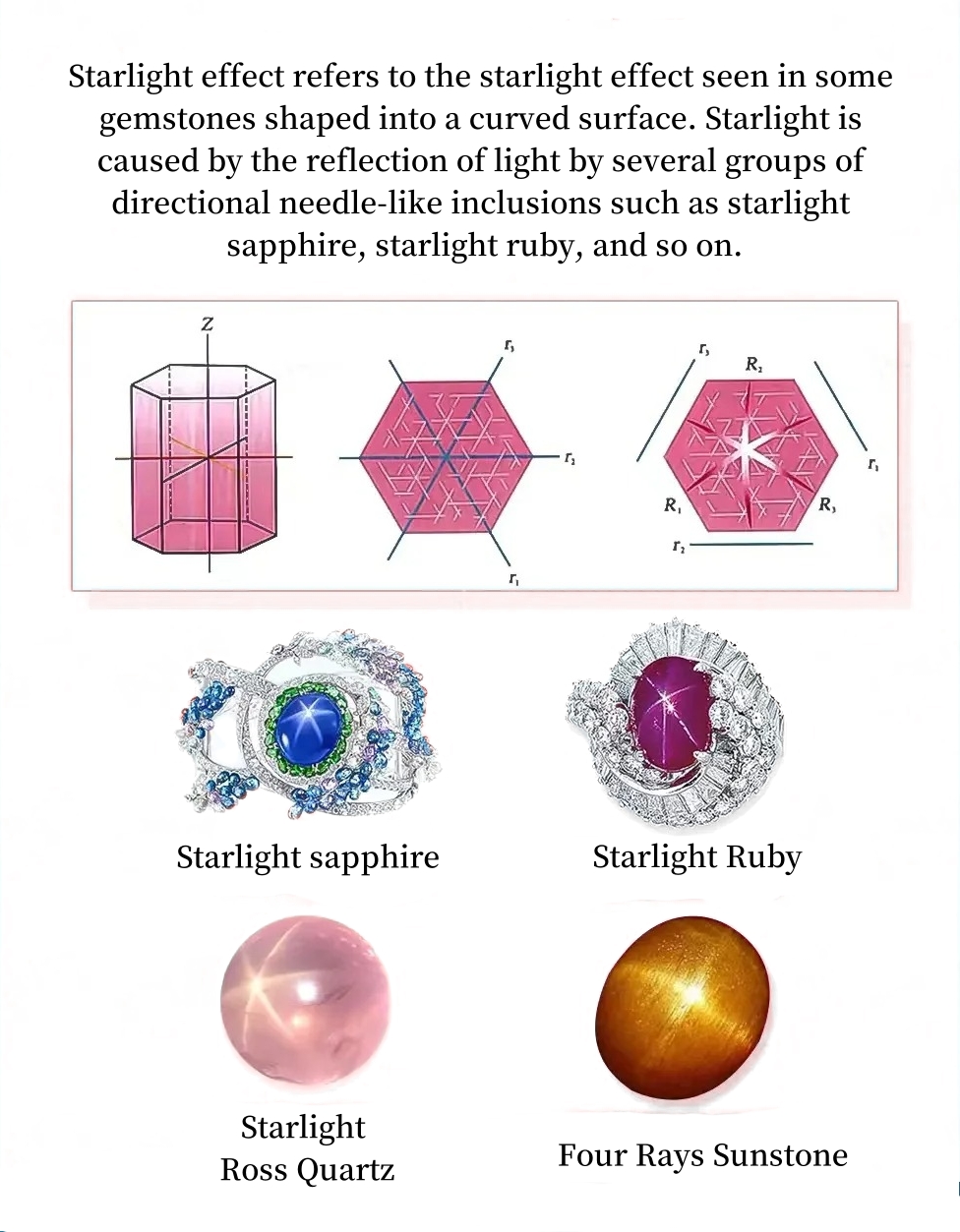
✅ Color-changing effect
Metachromatic effect refers to the color or series of colors produced by the interference or diffraction of light when light is reflected from the film or from the structure characteristic of precious opals. It is characterized by a variety of spectral colors on the surface of the same gem, an irregular distribution of various color pieces, and the color changes with the rotation of the gem mineral. Like Opal’s color-changing effect.
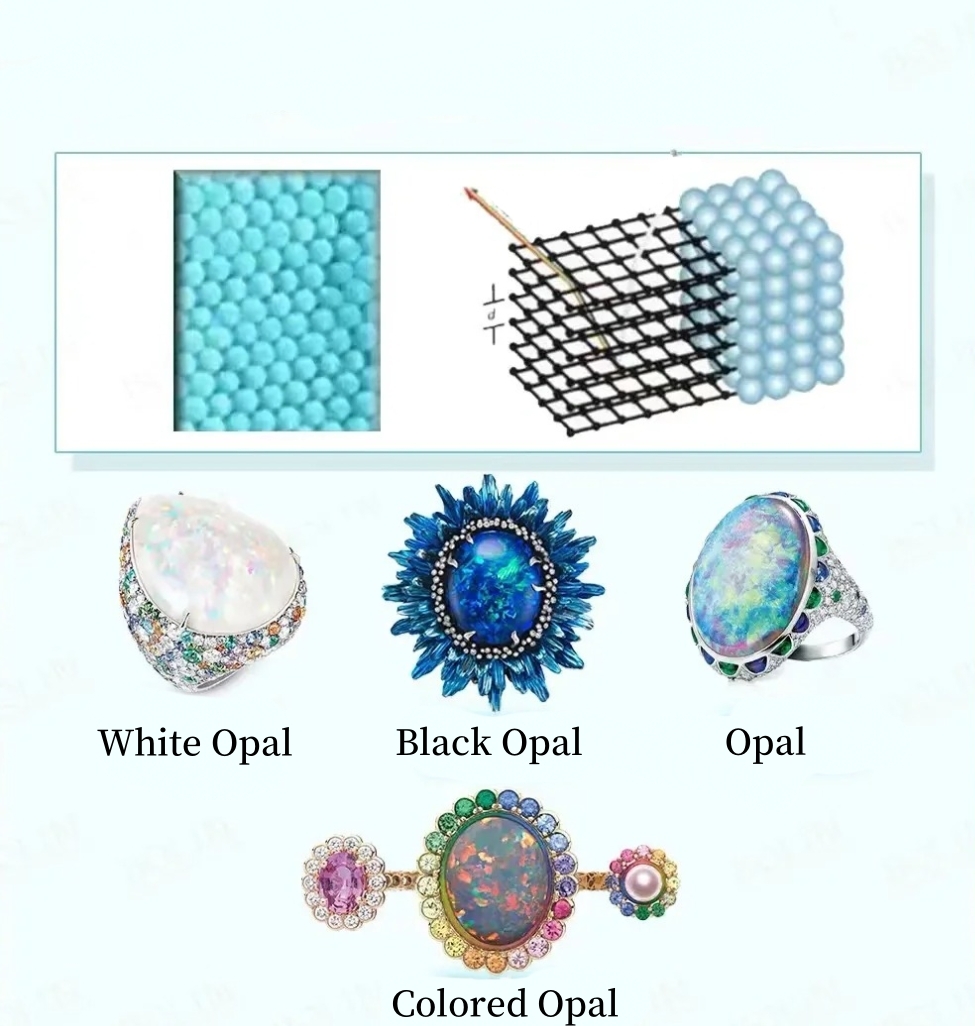
✅ Color change effect
The phenomenon that the color of gem minerals changes with the energy distribution of the incident light spectrum or the incident light wavelength is called the discoloration effect. The effect of color change is related to the selective absorption of light by color ions in gemstones. For example, alexandrite is blue-green in daylight and red in incandescent light.
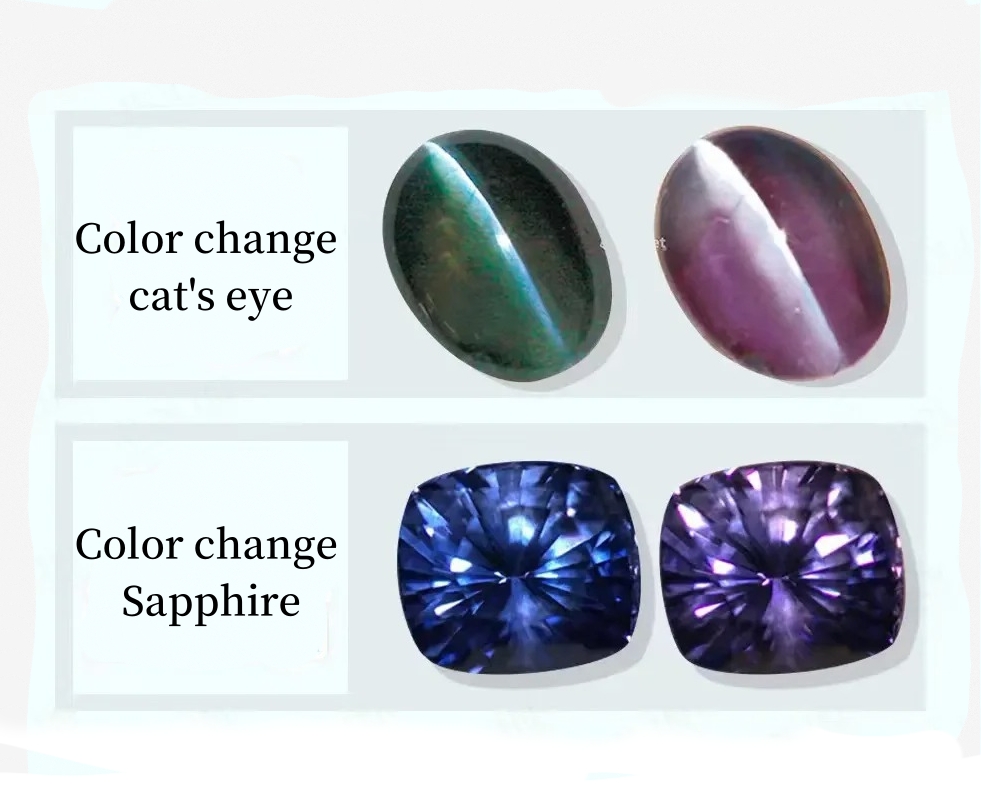
✅ Moonlight effect
The moonlight effect is also known as the brilliance effect, which refers to a wave of silver-white or light-blue floating light visible when the gem mineral is rotated on a curved feldspar ring surface, resembling a soft moonlight. It is a diffuse reflection effect of light produced by inclusions or special structures inside gem minerals.
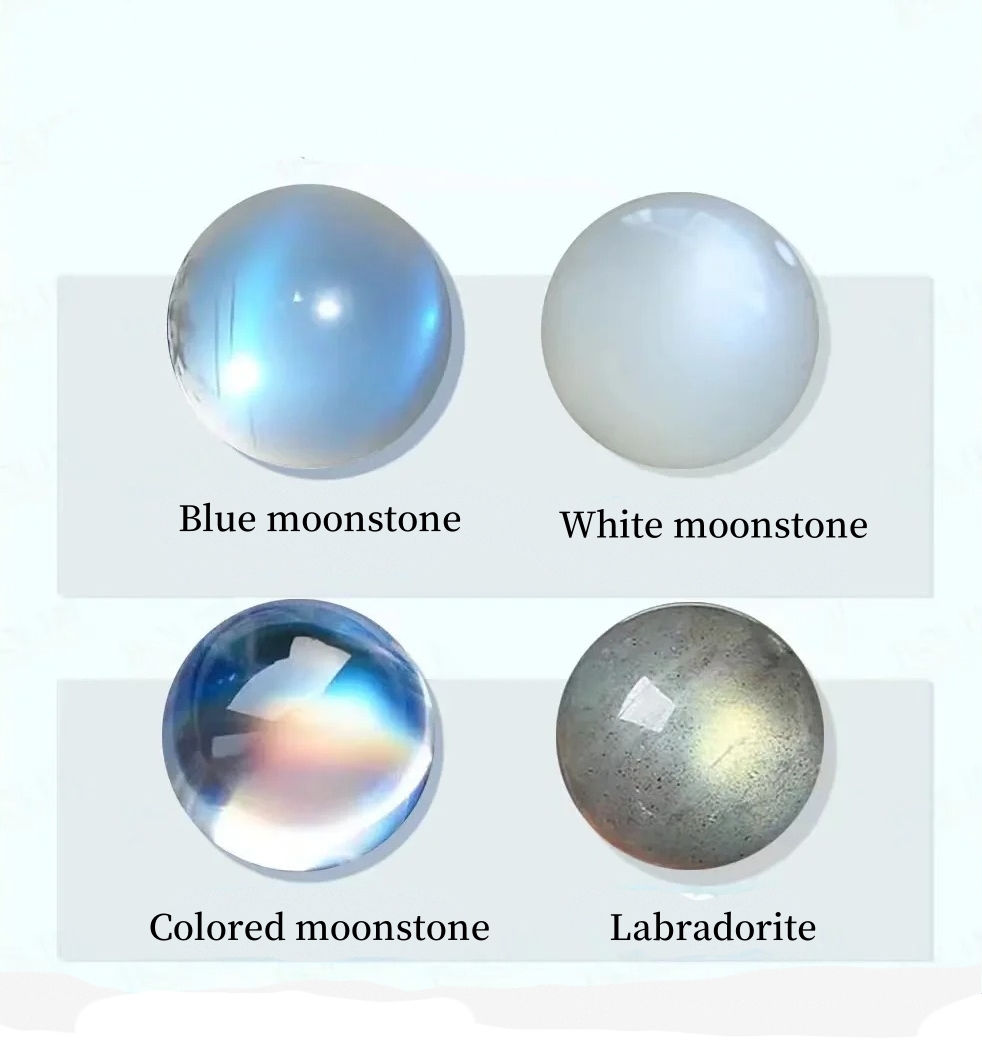
✅ Gold placer effect
There are many opaque solid inclusions inside the transparent gem, such as mica sheets, pyrite, hematite and small metal sheets, etc. When observing the gem, the reflection of the inclusion on the light shows many star-like points of reflection, like sand gold in water, called sand gold effect. Like a sunstone.

Follow me, take you to know more jewelry knowledge!!


